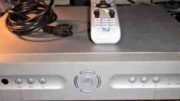Nearly 80% of the population in the US watch television on a given day. For many Americans, sitting in front of a screen at home with the family is a choice leisure activity. A good television set, therefore, makes a valuable difference. Picture quality is considered the most important feature for people who are shopping for a new set. If a modern television is on your shopping list, consider OLED, which is touted as the best in image quality, in addition to having a low power consumption and a good consistency of brightness.
High Contrast Ratio
If you are building a home theater or a multi-purpose media room, it makes sense to equip it with devices that use the latest technology. Look for companies that have a good track record in designing and manufacturing audio-visual products to enhance your watching or listening experience. A smart way to ascertain that you are getting reliable devices is to check the evolution of a company. Their history will give an indication of their commitment to developing equipment that is both innovative and superior. Since screen quality matters when watching television, a set that uses OLED technology is a good option. Its main attraction is its high contrast ratio, producing extremely bright images and perfect blacks without clouding.
OLED has a better contrast and brightness plus possesses a wider color range, unlike liquid crystal display (LCD) or light-emitting diode (LED) televisions. A contrast ratio that is above average creates realistic images compared to a display with a low one. Moreover, the television does not have any off-axis issues, which means that the images it produces look the same from any angle. Whether you sit away from the center or on the sides, there is no change in image quality because OLEDs have fuller viewer angle than LCDs.
Its Flexibility Is An Advantage
OLED TVs are also thinner, lighter and more malleable than the crystalline layers found in an LED or LCD display, making it possible to use them in different forms. In addition to curved and rollable screens, you can apply the technology on wearables and fit mobile devices with foldable displays. Cars can also be equipped with transparent OLEDs in windows or windshields.
Low Power Consumption
Depending on the size and technology, television sets typically consume between 80 and 400 watts, according to Michaelbluejay.com. However, older models, such as the big and bulky cathode ray tube (CRT) sets, are not energy-efficient. Another energy hog is a plasma screen, which generates a lot of heat and eats up more electricity. On the other hand, LCDs and LEDs consume less power than comparable plasma sets, according to the US Environmental Protection Agency (EPA). An OLED TV expends less electricity because it does not require backlighting. Reducing its brightness will also lead to lower electricity requirements.
On average, it costs $20-$30 a year to run a modern TV, according to CNET. While buying a modern TV such as an OLED can get your power consumption down, there are also things that you can do to reduce your bills. Purchase a smaller TV, watch with a dimmer picture, and instead of streaming (which uses more energy because servers and data centers need a huge amount of electrical energy), use an antenna or a satellite.
High Cost Of Production
Despite its attractive features, there are also downsides to buying an OLED television. One major disadvantage is the hefty price tag, which is a direct result of the cost of producing them. Manufacturing an OLED panel is more expensive than making LCDs. It is also a trickier process, which is why only one company in the world currently makes them: LG Display.
To illustrate, an LCD display uses one layer for color and another for the backlight. On OLED, both must be incorporated in one layer, making it a complicated procedure. On top of it, OLED technology is still new, with the first TVs only becoming available on the US market from 2013. Nonetheless, prices have gone down significantly year after year, and today, you can get a 48-inch for $1,500 or a 77-inch for $4,300. While the price may not be within a household’s budget, it is expected to go down as technology and supply improve.
Lifespan Is Low
Another weakness of OLED television sets is their lifetime. LG, the primary manufacturer of OLED panels, claimed that their televisions can last 100,000 hours or 30 years of watching TV 10 hours a day, according to an article in the Korea Times. However, there are fears of burn in or image retention, a process where an image is played so often and continuously that it leaves a permanent mark on the screen. On the bright side, TV makers are working to limit this risk by introducing several functions, such as the screen shift function, which moves the screen at designated intervals to maintain picture quality. It also detects still images so that brightness is reduced to prevent irreversible damage.
An OLED TV may not be the cheapest option on the market, but prices have already gone down considerably since it was first introduced. If you’re after a seamless viewing experience, OLED has the best contrast ratio and excellent picture quality, a price that may be well worth paying.




